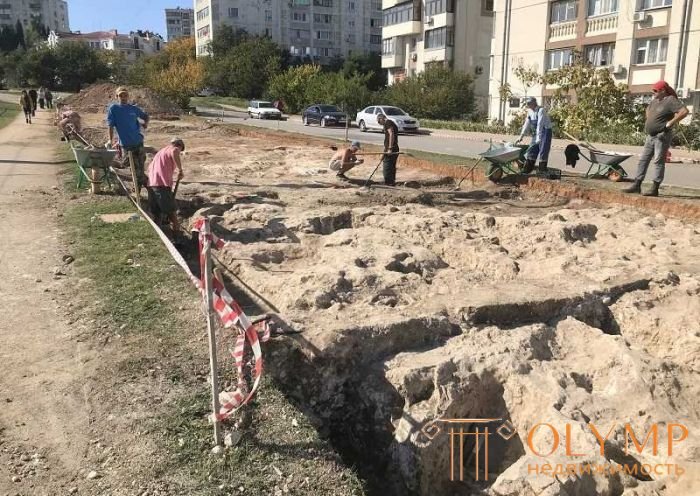
Historical, architectural and cultural studies, which can be more accurately defined as research, are carried out during the restoration of cultural monuments and architectural monuments
Restoration of the monument must necessarily rely on multilateral comprehensive research. They begin already at the stage of preliminary familiarization with the object, when, schematic measurements and familiarization with the primary information contained in the documentation stored in the state bodies for the protection of monuments and in the most accessible literature are performed. The purpose of these works is to make a primary understanding of the structure to be restored, to give a general assessment of its artistic features in the present state, the degree of distortion by later restructuring and technical safety. Prior to the disclosure of the monument, relying only on a visual acquaintance with it, it is possible to give a similar assessment only very approximately, but for this the architect and the engineer who perform the work together require great knowledge and experience. Based on a preliminary survey, the scope, composition and focus of further research are established.
The research program should include a cycle of works on architectural study of the monument and a cycle of engineering and technical surveys. It is important that these cycles be mutually linked to obtain the most complete and comprehensive research picture, without which the correct solution of the restoration tasks is impossible.
The cycle of architectural study of the monument is designed to illuminate with maximum completeness the construction history of the monument, to identify the surviving remnants of the lost architectural forms, to determine the possibility of their documented exact restoration. This cycle includes work carried out outside the monument, and studies of the structure itself in nature. Outside the monument, historical data is collected about it, which has come down in the form of text or graphic materials. Field studies include work on the fixation of the monument, archaeological and sounding disclosure. In addition, for a deeper understanding of the studied monument, it is usually necessary to collect information about other structures of the relevant time and territory, the so-called analogies. In addition, in some cases, it becomes necessary to involve an artist-restorer to establish the presence or absence of paintings, paints, valuable elements of decoration, the degree of their safety and technical condition on the monument.
The main task of the engineering research cycle is to identify the technical condition of the monument, the causes and factors of the destructive processes taking place, outline the necessary technical measures to ensure the long-term preservation of its structures and decorative furniture. To do this, it is necessary to study the hydrological conditions of the territory where the monument is located, and the state of its structures. The study of structures is usually carried out by opening them in the form of pits or probes, which allow to establish the state of laying of foundations and walls, the presence of hidden cracks, damage to beams and rafters, etc. An important part of the study is a laboratory study of the building materials of the monument, by means of which their chemical composition, complex of physical and mechanical properties and state are determined. In particular, for the development of technological recommendations and selection of new restoration materials, such properties as mechanical strength, frost resistance, porosity, water absorption, vapor permeability and such indicators of state as humidity and salinity are of paramount importance. In determining the causes of destruction, it is also important to identify the contamination of the monument’s structures with various types of biodestructive agents: mushrooms, algae, microorganisms, etc. To determine the reliability of metal structures of great importance is the study of the crystal structure. In addition, laboratory studies of materials allow us to answer a number of questions about the architectural study of the monument.
The processes of destruction of materials are closely related to the conditions in which these materials are located, primarily with temperature and humidity. Recently, the study of temperature and humidity conditions has become increasingly important in the complex of engineering restoration studies. Especially great is the importance of studying and normalizing the temperature and humidity conditions for monuments with wall paintings, stucco molding and other elements of valuable decoration, as well as objects of the internal situation that are most sensitive to the adverse effects of the main destructive factors.
The versatility of engineering and technical research tasks makes it necessary to involve specialists from various scientific fields: geology, building engineering, chemistry, physics, biology, metal science, and building physics. As a rule, in large restoration organizations there are scientific units involved in the development of all these issues. However, even in this case, the general coordinating role, as a rule, should belong to the restorer architect, who most fully knows the peculiarities of the monument and the main tasks of its upcoming restoration.
The results of complex scientific research should include the following materials:
a) extracts from archival documents and other sources;
b) a list of bibliographic sources and archival files;
c) historical background;
d) illustrations (reproductions, copies of documents, copying, epigraphic studies, etc.);
e) dimensioned drawings;
e) a report on archaeological excavations, probes and pits;
g) report on research and testing of building materials;
h) a conclusion on the technical condition of the monument with recommendations for its engineering restoration;
i) a report on selected analogues and systematization of the examined architectural elements of the monument;
j) historical and stylistic analyzes of the building’s building development and other research.
Что бы оставить комментарий войдите
Комментарии (0)